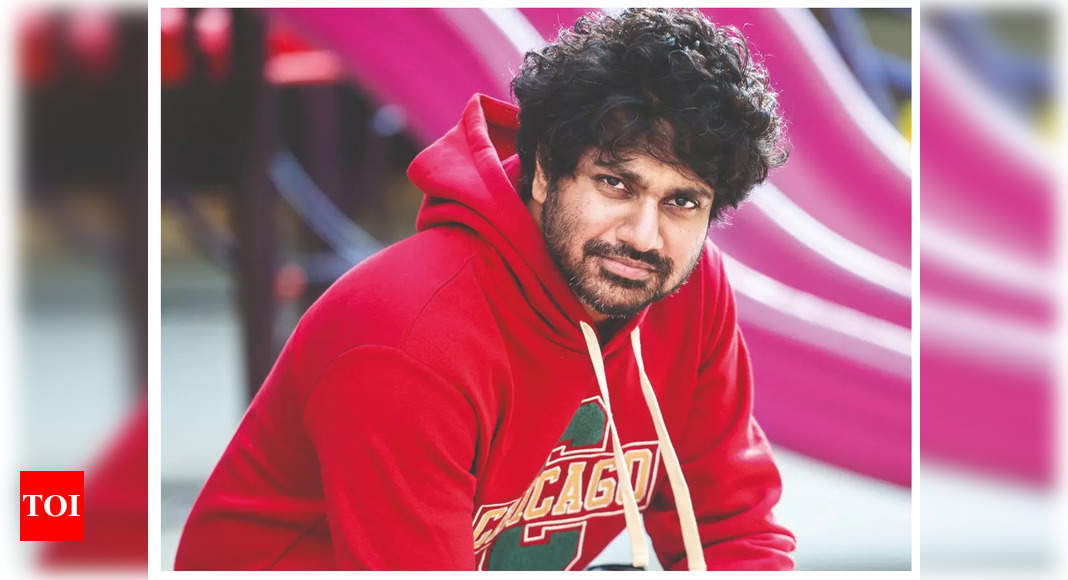
em was the 2020 version Whoopty by American rapper CJ, which featured a prominent sample of the composition. Recently, the American Society of Composers, Authors and Publishers (ASCAP) awarded it the Song of the Year and Top Streaming Song. They also recognised and credited Mithoon for it. This is probably the biggest news in the Indian music industry in a long time. Talking exclusively to Bombay Times, Mithoon says, “I am thrilled as this is a massive breakthrough for all Indian composers I represent today.”
Mithoon says, “This is the first time in the history of Indian music that an Indian artiste has received credit and royalty for the use of a sample/melody of their music in an international track. This recognition is all because of the relentless efforts made by Javed Akhtar saab and his team, who spearheaded the Copyright Act (Amendment) Bill in 2012, which stated that the right to royalty was non-transferable. I feel very fulfilled as an artiste and Indian music composer, and am very excited about this, not just personally, but for our industry. It is time Indian composers are celebrated for what they are contributing to the world with the melody and content we artistes have.”
While there have been instances of Indian artiste’s works being used by prominent names like Britney Spears, Black Eyed Peas, Nelly Furtado, Kanye West and others, they haven’t been credited for it. Mithoon says, “I am really glad that now the system is so strong that if you use, or sample anybody’s music, it actually tracks it on fingerprinting and it gives you credit as well as royalty.”
(Top) 2020 version Whoopty by American rapper CJ, which featured a prominent sample of Mithoon’s title track of Sanam Re (2016) .
‘It is good to see one artiste give credit to another when using their work’
AR Rahman says, “It is also good to see one artiste give another credit when using their work, as in this case. As the world comes closer through art, by breaking boundaries of geographies and language, solidarity amongst the fraternity is a fantastic milestone. And enablers like ASCAP have only made it more transparent and fairer to all involved. This, indeed, is a step in the right direction. I hope there will be many more success stories of Indian
artistes in the future.”
‘People are getting their deserved royalty’
Javed Akhtar says, “I am very proud of Mithoon and the kind of impact his music has made. Many people across the globe have recreated his melody and given him credit. He is getting his due royalty. There was a time when musicians were importers of Western music, and it influenced Indian film music. Today, the importers have become exporters, and we are sending our music there. Hundreds of our songs, compositions, preludes and interludes are being used by major stars of the world. What is great now is that people are getting their deserved royalty thanks to the law that came into force in 2012. I see a very bright future now for musicians and creative people.”
What creators need to know about royalty
There isn’t any singular action that determines efficient royalty collection. A creator signs up with a publishing administrator who is familiar with the systems and procedures and ensures that no money is left on the table anywhere. Royalty-collecting organisations use metadata (song information) to identify the song so they can pay the creator when their songs are used.
NEED OF THE HOUR: Accurate metadata collation for all our music
Publishing Administrator Sherley Singh says, “Today India is no longer a niche market amongst global players. Our music has a vast reach and with accurate metadata collation, musicians in India can have the same benefits as their counterparts in the west. The money flow is consistent as consumption of media has never been at this scale before. The back end of this system is what needs to be given more attention. This is why publishing administration is in today’s times an integral part of a musicians business.”
Kinds of royalties
As a music creator and a songwriter making music is exciting and challenging but it’s the part you love. Once your song is released through a film, OTT platform, TV or directly with a distributor, your music reaches your listeners. For every listen, stream, view or download music makes two kinds of royalties: Publishing Royalties (based on the underlying composition and lyrics) and Master Recording Royalties (based on the specific recording of the song).
Publishing royalties are fundamental but often overlooked by authors and composers. To collect these royalties, song information (Metadata) must be registered and uses must be tracked by a range of royalty collecting societies (IPRS, PRS, ASCAP) from around the world. While master recording royalties come directly to you from distributors or labels, publishing royalties are collected from royalty collection societies. Global music publishing includes multiple kinds of rights, each of these rights come from many kinds of song usage plus many many different pay sources in hundreds of countries.